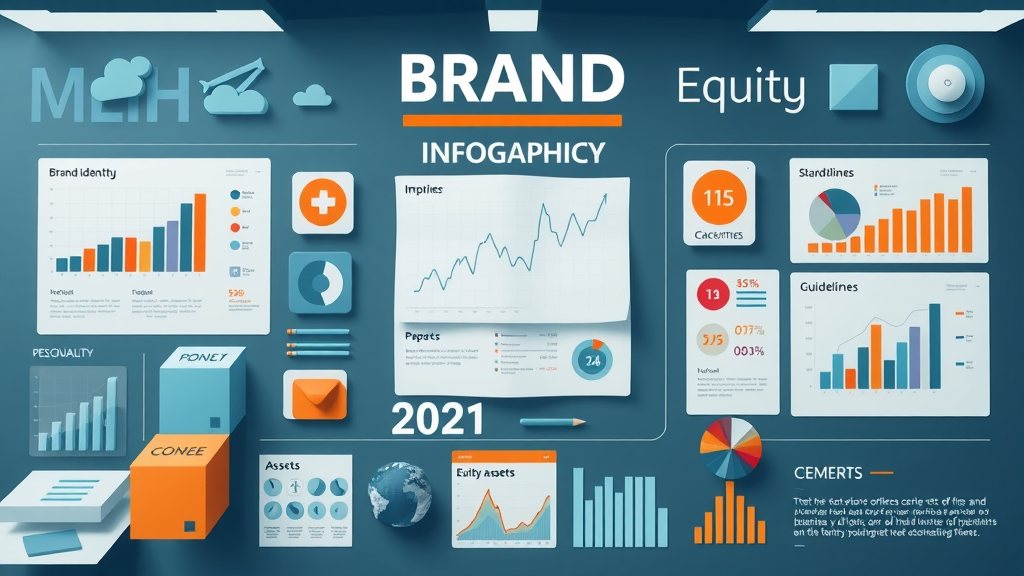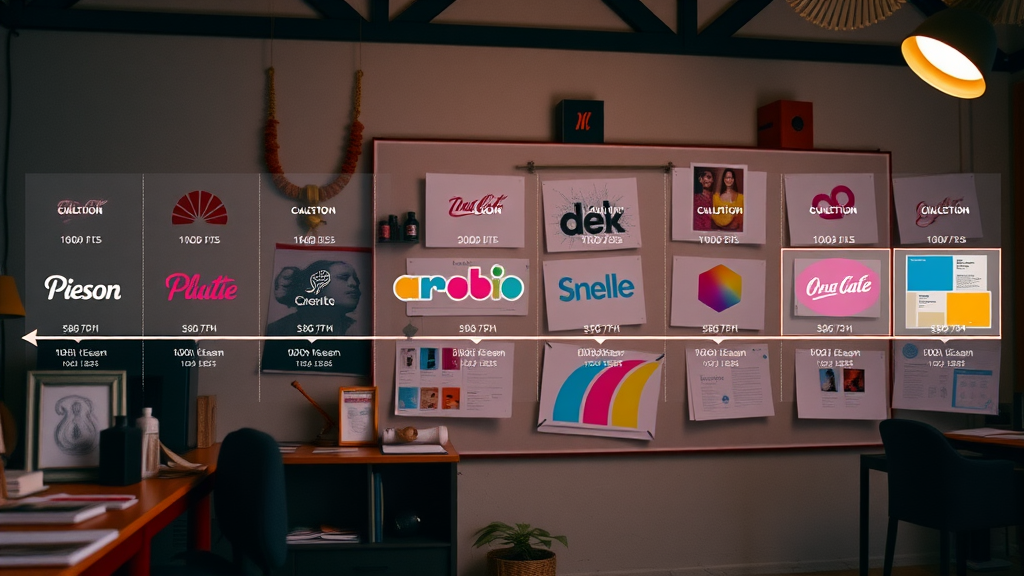Did you know that 77% of consumers buy products based on the brand name alone? If you're feeling overwhelmed by brand management in today’s ever-evolving market, you’re not alone. In a world saturated with choices and messaging, mastering effective brand management is the difference between standing out and blending in. This comprehensive guide offers actionable solutions and insider insights to help you fix your brand management struggles starting now.
Opening Insights: Why Brand Management Matters More Than Ever
"Did you know that 77% of consumers buy products based on the brand name alone? Effective brand management is more critical than ever in an oversaturated marketplace."
In the current digital-first marketplace, brand management is no longer a luxury reserved for giant corporations—it's a necessity for businesses of all sizes. Consumers face a barrage of products, messages, and touchpoints daily; without a strategic brand management strategy, even the best products can get lost in the noise. Brand management helps companies build brand equity, foster loyalty, and ensure that a brand’s personality and values resonate at every customer interaction. If your brand feels invisible or inconsistent, it’s time for a makeover—because how consumers perceive your brand can ultimately dictate your growth, revenue, and relevance.
This article unpacks critical elements—from clarifying brand strategy and establishing powerful brand guidelines to harnessing social media for robust brand recognition. Whether you’re a new business or an established organization seeking to refresh your brand image, you’ll gain the tools, tactics, and practical steps to build a strong brand that endures and thrives, no matter the competition.

What You'll Learn About Brand Management
- The definition and components of brand management
- Essential pillars and strategies for building strong brands
- Role and skills of a brand manager
- How to create, enforce, and sustain brand guidelines
- Maximizing brand equity, loyalty, and recognition
- Overcoming common brand management challenges
Table: Key Brand Management Concepts Breakdown
| Brand Identity | Brand Asset | Brand Equity | Brand Guidelines | Brand Personality | Brand Manager Role |
|---|---|---|---|---|---|
| Unique visuals & messaging that define the brand | Logos, slogans, color palettes, tone of voice | The perceived value & trust customers place in the brand | Rules and standards to maintain brand consistency | Emotional traits and tone reflected by the brand | Oversees strategy, consistency, and brand growth |

Brand Management Explained: Fundamentals for Success
What Do You Mean by Brand Management? [PAA]
Brand management is a holistic approach to shaping, guiding, and maintaining your business’s brand identity, consumer perception, and marketplace reputation. It’s about strategic stewardship of both tangible and intangible brand assets—everything from your logo and tagline to your brand’s tone, message, and the emotional connection with your target audience. In short, effective brand management crafts every interaction to consistently reflect a strong brand image and inspires trust, loyalty, and preference among your target market.
This discipline requires collaboration between marketing teams and leadership, constant feedback, and adaptation. Brand managers must analyze audience trends, adapt messaging over time, and maintain unwavering consistency across all channels—including social media, packaging, advertising, and customer service. The end goal is to build brand equity so your business is remembered, trusted, and chosen above competitors—today and in the future.
Definition and Components of Brand Management
At its core, brand management revolves around four key components: brand identity, brand equity, brand recognition, and brand assets. Brand identity focuses on creating a unique image and message that sets your business apart. Brand equity is the cumulative value and trust your brand amasses over time, which in turn drives business growth. Brand recognition is about maximizing recall and positive associations with your product or service. Lastly, brand assets include both tangible elements—like logos and brand guides—and intangible ones, such as reputation and customer experience.
- Brand identity: Uniqueness and differentiation
- Brand equity: The value of brand
- Brand recognition: Customer recall and trust
- Brand assets: Tangible and intangible elements

For a deeper dive into the foundational elements that shape a successful brand, you might find it helpful to explore this comprehensive guide to branding, which covers strategies for building, growing, and safeguarding your brand identity.
Answer: Brand management is the ongoing process of creating, developing, and maintaining a brand’s reputation, visibility, and value through systematic strategies and ongoing efforts.
When you practice brand management, you’re not simply executing marketing tasks—you’re actively managing the perception, experience, and future of your business in the public eye. It is this ongoing, structured commitment that enables a business to nurture lasting relationships with its audience, adapt to change, and maintain its competitive advantage.
Understanding the 4 Pillars of Brand Management [PAA]
What are the 4 Pillars of Brand Management?
- Brand Strategy
- Brand Identity
- Brand Guidelines
- Brand Equity

Answer: The 4 pillars are brand strategy, brand identity, brand guidelines, and brand equity—all essential for effective brand management.
Let’s break this down: the first pillar, a solid brand strategy, ensures every step your brand takes serves a larger purpose and targets the right audience. Brand identity allows you to visually and emotionally stand out, providing that unique fingerprint in a sea of competitors. Brand guidelines are your rulebook—keeping messaging, visuals, and tone on track, no matter which marketing team crafts the material. Finally, brand equity is the value you accumulate by consistently delivering on your promise—building brand loyalty and commanding a premium in the marketplace.
Neglecting even one of these pillars can result in confusion, diluted brand image, and lost opportunities. Conversely, focusing on all four drives lasting business results and maximum customer engagement.
The 3 C's of Brand Management [PAA]
What Are the 3 C’s of Brand Management?
- Clarity
- Consistency
- Commitment

Answer: The 3 C’s—Clarity, Consistency, and Commitment—guide strategic brand management and build long-term brand loyalty.
These three principles underpin every successful brand management strategy. First, clarity means having a clear, focused message that accurately reflects your brand’s core values and brand personality. If customers don’t instantly “get” your brand, they’ll quickly move on.
Second, consistency ensures that every customer touchpoint—whether it’s your website, social media feed, or physical packaging—delivers a seamless and familiar experience. This consistency builds brand recognition and strengthens consumer trust. Third, commitment refers to the ongoing effort required to maintain, grow, and protect your brand, regardless of prevailing trends or shifting markets. Brands that lead with the 3 C’s foster enduring loyalty and secure their place in the market.
Brand Manager: Role, Responsibilities, and Required Skills
What is the Main Role of a Brand Manager? [PAA]
A brand manager is the captain of your branding ship. Their main job is to oversee and guide the development and consistency of the brand image across all channels—internally and externally. This includes managing brand asset usage, monitoring brand guidelines adherence, shaping brand personality, and spearheading campaigns that bolster brand equity. A brand manager coordinates between leadership, creative teams, and marketing teams to ensure everyone upholds the brand guide.
Answer: The primary role of a brand manager is to oversee, shape, and grow brand equity while safeguarding trust and recognition across all channels.
Brand managers are responsible for transforming a business’s intangible assets—its vision, culture, and emotional resonance—into something tangible, valuable, and lasting. They must always keep their finger on the pulse of both the brand and the consumer, adapting the strategy as needed, and ensuring that the brand experience meets (or exceeds) customer expectations. This stewardship is what transforms a brand from simply known to absolutely loved.
Core Skills Every Brand Manager Must Have
- Strategic thinking
- Data-driven decision making
- Creative problem-solving
- Knowledge of brand assets and guidelines

Today’s brand managers thrive when they master several vital skills. Strategic thinking allows them to plan for both immediate wins and long-term brand growth. Highly effective brand managers lean on data-driven decision making, using analytics platforms and feedback tools to measure campaign impact, evaluate brand equity, and guide next steps. Creative problem-solving and communication skills ensure branding remains fresh, relevant, and engaging. Finally, a deep understanding of brand asset design and usage, as well as the implementation of brand guidelines, is crucial for day-to-day brand consistency. These skills, together, are what drive effective brand management.
Building Brand Management Practices that Last
How to Develop Effective Brand Strategy
To build an effective brand management foundation, you must first develop a robust brand strategy. Start by defining your brand’s core values, vision, mission, and unique selling proposition. Know your target audience inside out—conduct market research to uncover real customer needs, preferences, and fears. Then, determine how your brand can uniquely solve their problems or add value. Your strategy should outline clear, attainable goals for brand equity, brand awareness, and brand recognition.
An effective brand strategy isn’t set in stone. Continually measure results, gather customer feedback, and adapt your branding activities as your market and audience evolve. Consider integrating digital channels and social media to effectively build brand loyalty and maintain real-time connection. Remember, the most successful branding strategies are proactive, intentional, and always center around the customer experience.
Steps to Establishing Strong Brand Identity
A strong brand identity is the soul of your business. Begin with foundational elements: logo, color palette, typography, and a consistent tone of voice. Ensure every visual and message aligns perfectly with your brand personality and speaks directly to your desired audience. Work alongside talented designers and storytellers to craft an image and message that will resonate, inspire trust, and stand out.
Once you define key brand elements, document them in a comprehensive brand guide. This brand guide—often used as the company’s brand bible—will help align internal teams, creative partners, and marketing teams with your brand’s purpose and visual standards. Use this tool to protect your brand assets and ensure seamless, recognizable experiences across platforms and customer touchpoints.

Crafting Brand Guidelines and a Brand Guide
"A well-defined brand guide is the backbone of effective brand management—ensuring alignment and consistency across all touchpoints."
A meticulous brand guide is essential for long-term brand management success. It codifies the do’s and don’ts of logo use, color selection, typography, tone of voice, imagery, and messaging. It educates internal teams, partners, and third-party vendors on how to present your brand and brand assets in every context—from product packaging and emails to social media graphics.
Strong brand guidelines aren’t static. They evolve with your business and market, reflecting customer feedback and emerging trends without sacrificing clarity or consistency. Smart companies review their brand guide annually, updating it after major branding decisions, product launches, or rebranding initiatives. This ongoing maintenance is what fuels effective brand management in a dynamic environment.
Maximizing Brand Equity and Building Customer Loyalty
Enhancing Brand Equity Through Consistent Brand Assets
Brand equity grows when customers perceive—and experience—your brand’s value over competitors. Consistency is the driving force behind this value. Ensuring your brand assets always look, sound, and feel the same—whether online, in print, or in person—instills deep trust in your target market. When customers recognize your logo, tagline, or product packaging instantly, they associate it with reliability and quality.
Monitoring the use of your brand assets via regular audits and leveraging digital brand asset management tools helps safeguard integrity across channels. In turn, this protects your brand equity and boosts your brand’s position in the minds of consumers, helping you command higher prices, expand market share, and generate organic referrals.
Strategies for Building Brand Loyalty in Competitive Markets
Fostering brand loyalty takes more than catchy slogans or attractive products—it requires a genuine, emotional connection with your audience. Deliver amazing brand experiences consistently, reward loyal customers, and gather feedback to improve your offerings. Show that your business cares about customer satisfaction, whether through responsive customer service, digital engagement, or thoughtful loyalty programs.
Blend real-time interaction (such as social media responsiveness) with exclusive offers and personalized communications to deepen relationships. Loyal customers often become brand advocates, organically promoting your brand identity and growing your reach far beyond standard marketing efforts. Remember: every point of contact is an opportunity to turn a happy customer into a lifelong supporter.

Tools Every Brand Manager Needs for Brand Management
- Brand asset management platforms
- Brand guideline templates
- Social media monitoring tools
- Customer survey and feedback platforms

The right technology stack is a game-changer for today’s brand managers. Brand asset management platforms make it easy to store, distribute, and ensure consistent use of logos, photos, videos, and other creative assets. Robust brand guideline templates provide a head start on maintaining coherence as your team or business scales. Social media monitoring tools are crucial for keeping tabs on brand mentions, reputation, and competitive positioning. Finally, customer survey and feedback platforms allow you to collect real, actionable data to inform brand decisions and keep brand management customer-centric. Invest in these tools to empower your team and protect your brand equity.
Brand Management in the Digital Era: Navigating Social Media and Online Channels
Leveraging Social Media for Brand Recognition and Growth

No brand management strategy is complete without a strong digital presence. Social media platforms offer unprecedented opportunities for brands to boost brand awareness, engage directly with customers, and amplify their unique brand personality. Creative, authentic content published regularly on platforms like Facebook, Instagram, TikTok, and Twitter fosters brand recognition and humanizes your business. Responding quickly to messages, comments, and feedback also strengthens brand loyalty and demonstrates genuine commitment to your community.
Additionally, harnessing social media analytics allows brand managers to measure engagement, reputation, and ROI—empowering better decision-making and strategy refinement. With the right blend of storytelling and real-time interaction, your brand can evolve from being just another option in the feed to a beloved destination with a committed audience.
Maintaining Brand Consistency Across Digital Assets
With so many digital platforms and content types, maintaining brand consistency can be challenging. A robust set of brand guidelines—covering imagery, tone, logo placement, messaging, and more—makes all the difference. Ensure every member of your marketing and creative teams understands and follows these guidelines, regardless of how the brand is expressed, to maximize brand equity and brand recognition.
Using digital asset management systems and regular brand audits, keep a close eye on content quality, message alignment, and the appropriate use of every brand asset. This vigilance not only protects your brand image but also builds the trust that fuels long-term brand loyalty.
Addressing Challenges in Modern Brand Management
Common Obstacles Brand Managers Face
Modern brand managers face an array of challenges—fragmented messaging across numerous channels, rapidly evolving social media trends, diluted brand image due to unauthorized asset use, and competition for consumer attention in a noisy digital environment. There’s also the constant need to balance creativity with brand consistency, and to keep up with technology, shifting audiences, and competitive threats.
Limited budgets, internal misalignment, and lack of clarity in brand guideline documents can further hinder effective brand management. Navigating these obstacles requires a proactive, systematic approach—one that leverages data, collaboration, flexibility, and regular evaluation to keep the brand moving in the right direction.
Solutions to Overcome Brand Management Challenges
To overcome these hurdles, focus first on building a well-documented brand guide that is accessible and updated regularly across all teams. Invest in digital asset management, centralized platforms, and feedback loops to ensure swift, consistent communication and content quality control. Equip your marketing and brand teams with resources and regular training to maintain clarity, avoid missteps, and adapt rapidly to market shifts.
Embrace automation and analytics to monitor every aspect of your brand management strategy, from campaign performance to customer sentiment. Most importantly, foster a company-wide culture that values brand equity and treats brand management as a shared responsibility—not just a marketing function. This ensures your brand remains resilient and adaptable, no matter what challenges arise.
Case Studies: Effective Brand Management in Real Life
"Successful brands are built on deliberate and proactive management—not luck."
Take Apple, for instance. Its unwavering commitment to brand identity—clean design, innovation, and simplicity—has driven immense brand equity and customer loyalty over decades. Coca-Cola, meanwhile, excels in nurturing consistent brand recognition and emotional resonance through storytelling and community initiatives. These examples prove that effective brand management isn’t a one-time effort, but an ongoing campaign rooted in clarity, consistency, and commitment.
Even in niche markets, brands that proactively manage assets, regularly review brand guides, and leverage customer feedback maintain strong positioning and weather industry changes. Their success stories demonstrate that with the right strategy, effective brand management can protect, grow, and future-proof any business.
FAQs: Common Questions About Brand Management
-
How do you measure brand equity?
Brand equity can be evaluated through customer surveys, net promoter scores, awareness studies, and tracking metrics such as repeat purchases, customer lifetime value, and share of voice compared to competitors. -
What tools can help with brand guidelines?
Platforms such as Frontify, Bynder, or Canva offer digital brand guide and brand asset management solutions, making it easier to create, distribute, and enforce your brand rules. -
How often should brand assets be updated?
Ideally, review and refresh your brand assets every 1–2 years, or after major business shifts, product launches, or strategic pivots. This ensures continued relevance and consistency. -
Why is brand personality important?
Brand personality forms the emotional connection between your business and your audience, shaping perception and loyalty. A well-defined personality humanizes your brand and helps attract the right customers. -
What’s the difference between brand management and marketing?
Brand management focuses on long-term brand equity, consistency, and reputation, while marketing is about executing campaigns and tactics to drive engagement, leads, and sales in the short term. The two go hand in hand for business growth.
Key Takeaways: Mastering Brand Management
- Brand management builds long-term equity and loyalty.
- Clear brand guidelines and a strong strategy are non-negotiable.
- Invest in the right tools and empower your brand managers.
- Consistency and commitment across all channels matter most.
Conclusion: Your Path to Effective Brand Management Starts Today
Mastering brand management isn’t a one-off project—it’s an ongoing commitment. Take these lessons to heart, empower your team, and start building a brand people trust today.
"For more information, read The Ultimate Guide to Branding: Build, Grow, and Protect Your Brand."
If you’re ready to take your brand management to the next level, consider exploring broader strategies that can help you future-proof your business and adapt to changing market dynamics. By deepening your understanding of branding as a holistic discipline, you’ll unlock new ways to build trust, foster loyalty, and drive sustainable growth. For a more strategic perspective and actionable insights, discover how to elevate your entire brand ecosystem by visiting The Ultimate Guide to Branding: Build, Grow, and Protect Your Brand. This resource is packed with advanced techniques and expert advice to help you stay ahead in today’s competitive landscape.
 Add Row
Add Row  Add
Add 




Write A Comment